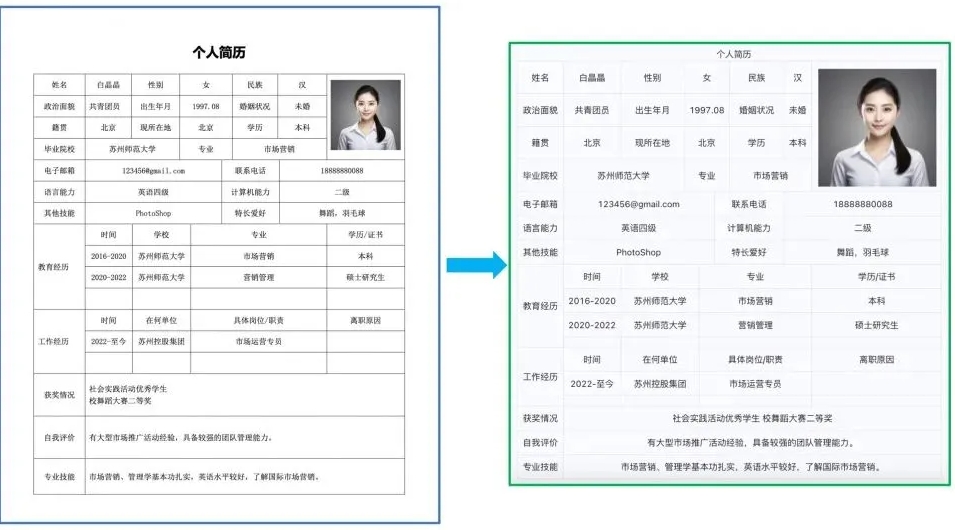Recently, with the rapid development of large models and RAG technology, the value of structured data in intelligent systems has become increasingly prominent. Against this backdrop, how to accurately convert non-structured data such as document images and PDFs into structured data has become a critical challenge that the industry urgently needs to address. In response to this situation, the PaddlePaddle team, leveraging its deep technical accumulation and profound understanding of user needs, has launched the new-generation document parsing tool — PP-StructureV3, providing an innovative solution to tackle complex document parsing problems.
Currently, many open-source solutions face numerous challenges when processing complex documents, such as inaccurate text recognition, disordered recovery of reading order, poor table and formula recognition results, etc. These issues severely limit the data quality for fine-tuning large models and hinder the progress of AI application implementation. The advent of PP-StructureV3 is precisely aimed at breaking this deadlock and bringing efficient and accurate document parsing experiences to the industry.

PP-StructureV3 demonstrates significant advantages in terms of precision and functionality. It supports high-precision parsing of document images or PDF files across various scenarios and layouts, seamlessly converting documents into Markdown and JSON formats. It also performs exceptionally well on the OmniDocBench benchmark test, surpassing many open-source and closed-source solutions. Additionally, PP-StructureV3 boasts specialized capabilities such as seal recognition, chart parsing, table recognition containing formulas/images, vertical text parsing, Chinese formula and chemical equation recognition, meeting the diverse needs for AI application deployment in different scenarios.
In terms of algorithms, PP-StructureV3 adopts a refined model combination strategy, efficiently coordinating the input and output of different models to achieve high-precision document parsing. From document image orientation classification, text recognition, layout region detection to table recognition, formula recognition, and chart parsing, the PaddlePaddle team has conducted full-stack self-research and meticulous optimization, ensuring the accuracy and reliability of parsing results.
To facilitate developer use, PP-StructureV3 offers a simplified API solution, supporting both local inference and service deployment. Developers can quickly implement document parsing functions via CLI prediction or Python APIs and save the results as structured JSON or Markdown formats. Meanwhile, PaddleX provides service deployment capabilities for PaddleOCR, enabling developers to quickly start and call PP-StructureV3 services.
Solution Introduction:
https://paddlepaddle.github.io/PaddleOCR/latest/version3.x/algorithm/PP-StructureV3/PP-StructureV3.html
User Guide:
https://paddlepaddle.github.io/PaddleOCR/latest/version3.x/pipeline_usage/PP-StructureV3.html
